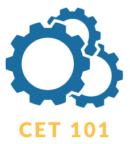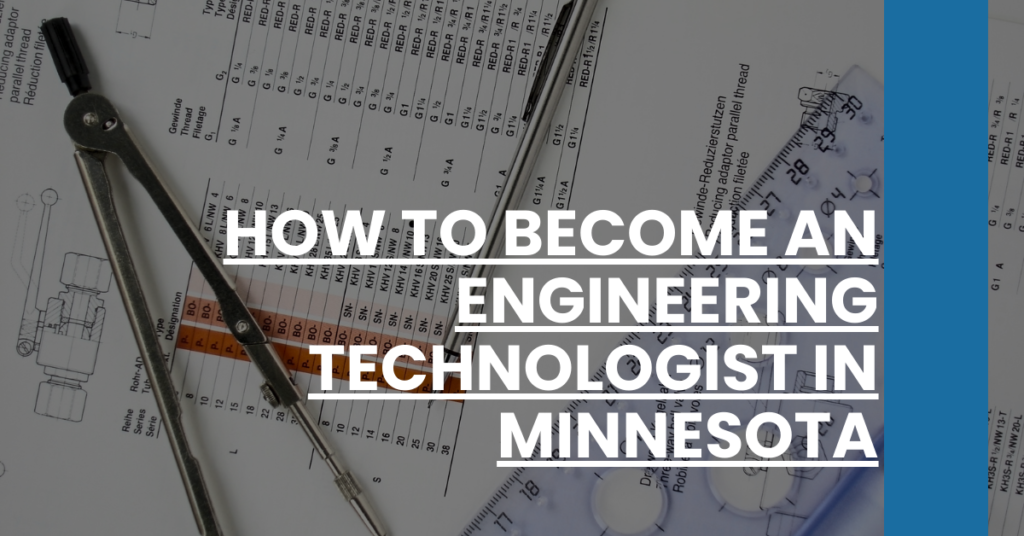Looking for programs in a specific city? Check out our lists of CET in Minneapolis, St. Paul, and Rochester.
Learning how to become an engineering technologist in Minnesota opens up exciting career opportunities.
- Educational requirements: Understand the high school and post-secondary education needed.
- Skill development: Discover essential technical and soft skills for success.
- Career opportunities: Explore job prospects in various industries.
Embark on your journey to become an engineering technologist in Minnesota today.
- Understanding the Role of an Engineering Technologist
- Educational Requirements
- Choosing the Right Engineering Technology Program
- Certification and Licensing in Minnesota
- Gaining Practical Experience
- Skills Development
- Job Search and Employment Opportunities
- Salary Expectations and Career Growth
- Joining Professional Organizations
- Continuing Education and Professional Development
- Looking for Engineering Technologist Information On States Bordering Minnesota?
- Conclusion and Next Steps
Understanding the Role of an Engineering Technologist
Engineering technologists play a crucial role in applying engineering principles to solve practical problems. They bridge the gap between engineering theories and the implementation of these concepts in real-world scenarios. Your journey to this fulfilling career in Minnesota involves various steps, from education to practical experience.
Responsibilities and Skills
As an engineering technologist, you’ll find yourself engaged in various activities, including:
- Designing and Developing Systems: You’ll work on creating and improving engineering systems and products, from initial design to final production.
- Testing and Troubleshooting: Ensuring the functionality and safety of engineering systems often involves rigorous testing and troubleshooting.
- Maintaining and Managing Projects: You may oversee the maintenance of engineering systems and manage projects to ensure they meet standards and deadlines.
In Minnesota, industries such as manufacturing, healthcare, and IT heavily rely on engineering technologists for their expertise in practical applications.
Differentiating Between Roles
Understanding the distinctions between engineers, technologists, and technicians is vital:
- Engineers focus on theoretical aspects and conceptual designs.
- Engineering Technologists implement and manage these designs in practical scenarios.
- Technicians typically assist both engineers and technologists with technical tasks and routine work.
Your role as a technologist leans heavily on applying knowledge to ensure the efficient operation of engineering systems.
Educational Requirements
High School Preparation
Start by building a strong foundation in high school. Emphasize courses in:
- Mathematics: Advanced classes in algebra, geometry, and calculus.
- Science: Focus on physics and chemistry.
- Computer Science: Develop your skills in programming and understanding computing fundamentals.
These subjects prepare you for the rigors of post-secondary education in engineering technology.
Post-secondary Education
Pursuing an associate degree or a bachelor’s degree in engineering technology is essential. Minnesota offers several reputable programs:
- Hennepin Technical College: Known for its hands-on training and industry-relevant curricula.
- Minnesota State University, Mankato: Offers ABET-accredited programs, ensuring high educational standards.
- University of Minnesota: Provides a robust curriculum combining theoretical knowledge with practical applications.
Importance of ABET Accreditation
ABET accreditation is a mark of quality in engineering and technology education. Programs with this accreditation meet rigorous standards, preparing you for successful careers. Employers often prefer graduates from ABET-accredited programs, making it a critical factor in your education.
Choosing the Right Engineering Technology Program
Factors to Consider
When selecting a program, consider the following:
- Faculty Expertise: Instructors with industry experience and active research involvement can provide valuable insights and mentorship.
- Hands-on Learning: Programs that emphasize practical experience through laboratories, internships, and co-ops offer real-world exposure.
- Reputation: Look at the program’s standing in the industry and its alumni network.
- Campus Resources: Facilities like modern labs, career services, and student organizations can significantly enhance your learning experience.
Top Programs in Minnesota
Institutions like the University of Minnesota and Minnesota State University, Mankato are renowned for their engineering technology programs. They offer advanced facilities, experienced faculty, and strong industry connections, ensuring a comprehensive educational experience.
Certification and Licensing in Minnesota
Relevant Certifications
Gaining certifications can distinguish you in the job market. Consider pursuing:
- NICET (National Institute for Certification in Engineering Technologies): Validates your technical skills and expertise in specific areas.
- Certified Engineering Technologist (CET): Recognized credential demonstrating your proficiency in engineering technology.
The Licensure Process
While not always mandatory, obtaining a Professional Engineering (PE) License can enhance your career prospects. The process includes:
- Passing the Fundamentals of Engineering (FE) Exam: This exam tests your understanding of engineering principles.
- Gaining Work Experience: Typically, four years of relevant experience under a licensed professional.
- Passing the Principles and Practice of Engineering (PE) Exam: Demonstrates your competency in a specialized area.
Additionally, check with the Minnesota Board of Architecture, Engineering, Land Surveying, Landscape Architecture, Geoscience, and Interior Design (AELSLAGID) to understand any state-specific requirements and regulations.
Gaining Practical Experience
Internships and Co-op Programs
Internships and co-op programs are invaluable for gaining hands-on experience. They allow you to:
- Apply Theoretical Knowledge: Transition from classroom learning to real-world application.
- Network with Professionals: Build relationships with industry experts and potential employers.
- Develop Practical Skills: Gain proficiency in tools and technologies used in the field.
On-the-Job Training
On-the-job training is crucial for honing your expertise. Engage actively in:
- Project Participation: Involvement in real-world projects enhances your problem-solving abilities.
- Technical Documentation: Managing and understanding technical documents prepares you for various aspects of the job.
- Continuous Learning: Staying updated with advancements in your field ensures long-term success.
Importance of Practical Experience
Employers value practical experience as it demonstrates your capability in real-world scenarios. Companies in Minnesota, such as 3M and Medtronic, often seek candidates with robust practical backgrounds, making internships and co-op programs indispensable.
Investing time in gaining relevant experience not only boosts your resume but also equips you with the skills necessary to thrive as an engineering technologist in Minnesota.
Skills Development
Key Technical Skills
To excel as an engineering technologist, you must cultivate a strong technical foundation. Key technical skills include:
- Proficiency in CAD Software: Utilize tools like AutoCAD or SolidWorks to design and model engineering systems.
- Understanding of Engineering Principles: Apply theories from mechanics, electronics, and materials science to solve practical problems.
- Familiarity with Modern Technologies: Stay current with emerging technologies and industry-specific software to remain competitive.
Practical experience and continuous learning help keep these technical skills sharp and relevant.
Essential Soft Skills
Beyond technical expertise, successful engineering technologists possess critical soft skills:
- Problem-solving: Approach challenges methodically and creatively to find effective solutions.
- Teamwork: Collaborate effectively with engineers, technicians, and other professionals to achieve project goals.
- Communication: Clearly articulate complex technical concepts to both technical and non-technical stakeholders.
- Project Management: Plan, execute, and oversee projects to ensure they meet timelines and budget constraints.
Developing Skills Through Coursework
Your coursework during an engineering technology program is designed to hone these skills:
- Laboratory Classes: Participate in hands-on lab sessions to apply theoretical knowledge in practical settings.
- Capstone Projects: Engage in comprehensive projects that simulate real-world engineering problems and require multidisciplinary approaches.
- Technical Electives: Choose electives that align with your career interests and provide specialized knowledge.
Extracurricular Activities
Involvement in extracurricular activities can further enhance your skills:
- Technical Clubs: Join engineering societies and clubs that provide opportunities for innovative projects and competitions.
- Workshops and Seminars: Attend events focused on emerging technologies, industry trends, and professional development.
Job Search and Employment Opportunities
Market Demand in Minnesota
Minnesota offers a robust job market for engineering technologists across various industries, such as:
- Manufacturing: Engage in the design, testing, and maintenance of machinery and production systems.
- Healthcare: Work on biomedical devices and healthcare technology, ensuring their efficient and safe operation.
- Information Technology: Develop and manage IT infrastructure, focusing on hardware systems and network operations.
Typical Employers
Prominent employers in Minnesota seeking engineering technologists include:
- 3M: Innovates in manufacturing, materials science, and consumer products.
- Medtronic: Focuses on biomedical engineering and healthcare technologies.
- Honeywell: Specializes in aerospace, building technologies, and performance materials.
Entry-Level Positions
Common entry-level positions for engineering technologists in Minnesota are:
- Quality Control Technologist: Ensure products meet specified standards through rigorous testing and inspection.
- Maintenance Engineer: Maintain and repair engineering systems to ensure continuous and efficient operation.
- Manufacturing Technologist: Improve manufacturing processes, ensuring they are cost-effective and efficient.
Job Search Tips
To enhance your job search, consider the following strategies:
- Build a Strong Resume: Highlight your education, practical experience, and relevant certifications.
- Utilize Online Job Portals: Use platforms like LinkedIn and Indeed to find job openings and network with professionals.
- Attend Career Fairs: Participate in local career fairs to meet potential employers and learn about job opportunities.
- Network: Join professional organizations and attend industry events to expand your professional network.
Salary Expectations and Career Growth
Average Salary Ranges
In Minnesota, the average salary for engineering technologists varies, influenced by specialization and experience:
- Entry-Level: $50,000 – $60,000 annually.
- Mid-Level: $60,000 – $75,000 annually.
- Senior-Level: $75,000 – $90,000 annually.
Factors Influencing Salary
Several factors can influence your salary:
- Area of Specialization: Certain fields, such as biomedical or electrical engineering, tend to offer higher compensation.
- Years of Experience: More experienced technologists typically earn higher salaries.
- Employer Type: Larger corporations and specialized industries often provide more competitive salaries.
Career Advancement Opportunities
Career growth opportunities include:
- Senior Technologist: Take on more complex projects and leadership roles.
- Project Manager: Oversee engineering projects from conception to completion, managing budgets, timelines, and teams.
- Further Education: Gain advanced degrees or certifications to specialize further or move into management positions.
Companies like 3M and Medtronic provide clear pathways for career advancement through professional development programs and internal opportunities.
Joining Professional Organizations
Benefits of Membership
Joining professional organizations can provide numerous advantages:
- Networking Opportunities: Connect with industry professionals, opening doors to career advancements and collaborations.
- Continuing Education: Access workshops, seminars, and certification programs to stay current with industry advancements.
- Industry Resources: Gain access to industry publications, research, and best practices that can enhance your professional knowledge.
Top Organizations to Consider
Consider joining prominent organizations such as:
- American Society of Mechanical Engineers (ASME): Focuses on mechanical engineering and provides a vast network and resources.
- Institute of Electrical and Electronics Engineers (IEEE): Offers resources and networking opportunities for those in electrical and electronics engineering.
- Minnesota Federation of Engineering, Technology, and Science Professionals: Provides local networking and professional development opportunities.
Continuing Education and Professional Development
Importance of Lifelong Learning
Lifelong learning is crucial in the rapidly evolving field of engineering technology. It ensures you remain competitive and adaptable to new advancements:
- Advanced Degrees: Consider pursuing a master’s degree in a specialized area of engineering technology.
- Professional Certifications: Obtain certifications relevant to your field to enhance your credentials and expertise.
- Specialized Courses: Enroll in courses focusing on the latest technologies and methodologies in engineering.
Opportunities for Growth
Numerous organizations and institutions offer professional development resources:
- Professional Associations: Engage in certification programs and training sessions to deepen your expertise.
- Workshops and Conferences: Attend industry events to learn about the latest trends and technologies.
- Online Learning Platforms: Utilize platforms offering courses and webinars on cutting-edge topics.
Looking for Engineering Technologist Information On States Bordering Minnesota?
In addition to Minnesota, we suggest looking for schools in nearby states.
- How to Become An Engineering Technologist in Wisconsin
- How to Become An Engineering Technologist in Iowa
- How to Become An Engineering Technologist in North Dakota
- How to Become An Engineering Technologist in South Dakota
- How to Become An Engineering Technologist in Michigan
Conclusion and Next Steps
Becoming an engineering technologist in Minnesota involves a well-structured path of education, skill development, and continuous professional growth. By leveraging the resources and opportunities available, you can build a successful and fulfilling career in this dynamic field. Explore further to begin your journey today.

